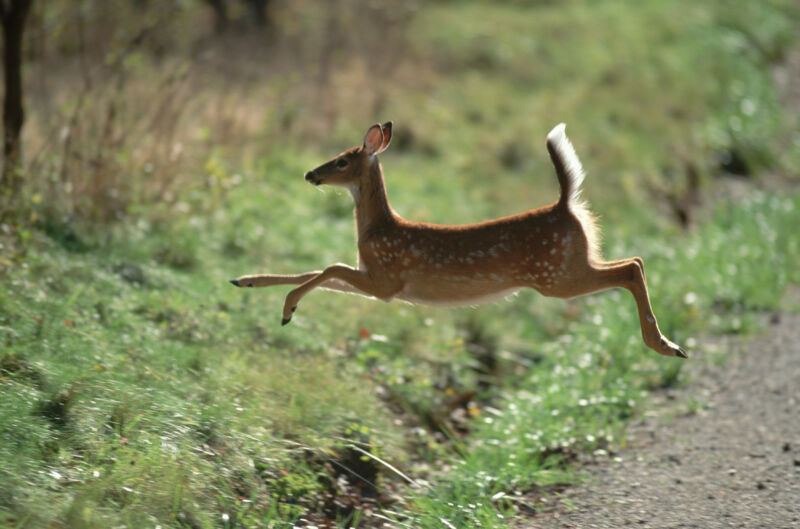
People in the US transmitted the pandemic coronavirus to white-tailed deer at least 109 times, and the animals widely spread the virus among themselves, with a third of the deer tested in a large government-led study showing signs of prior infection. The work also suggests that the ubiquitous ruminants returned the virus to people in kind at least three times.
The findings, announced this week by the US Department of Agriculture, are in line with previous research, which suggested that white-tailed deer can readily pick up SARS-CoV-2 from humans, spread it to each other, and, based on at least one instance in Canada, transmit the virus back to humans.
But the new study, led by the USDA’s Animal and Plant Health Inspection Service (APHIS), provides a broader picture of deer transmission dynamics in the US and ultimately bolsters concern that white-tailed deer have the potential to be a virus reservoir. That is, populations of deer can acquire and harbor SARS-CoV-2 viral lineages, which can adapt to their new hosts and spill back over to humans, causing new waves of infection. It’s conceivable that viruses moving from deer to humans could at some point qualify as new variants, potentially with the ability to dodge our immune protections built up from past infection and vaccination.
“Deer regularly interact with humans and are commonly found in human environments—near our homes, pets, wastewater, and trash,” Dr. Xiu-Feng “Henry” Wan, an expert in emerging infectious diseases at the University of Missouri who led some of the research, said in a statement. “The potential for SARS-CoV-2, or any zoonotic disease, to persist and evolve in wildlife populations can pose unique public health risks.”
Between late 2021 and 2022, the USDA, along with researchers and state partners, surveyed over 11,000 white-tailed deer from 26 states and Washington, DC. Of those, 31.6 percent had antibodies indicating a previous infection with SARS-CoV-2, and 12.2 percent had detectable SARS-CoV-2 virus.
For another part of the study, researchers collected around 9,000 respiratory samples from deer in 26 states and Washington, DC, between late 2021 and early 2022, then sequenced the viral genomes of nearly 400 SARS-CoV-2 viruses isolated. An evolutionary analysis of the genetic sequences suggested there were at least 109 spillover events from humans to deer, with evidence of onward transmission in deer from there. The viruses found in deer spanned multiple variants circulating in humans, including Alpha, Gamma, Delta, and Omicron. The data also found evidence of deer-specific genetic changes to the SARS-CoV-2 viruses as they moved from deer to deer.
Lastly, the genetic data suggested three spillovers of deer-adapted SARS-CoV-2 viruses back to humans—two in North Carolina and one in Massachusetts. For this, the researchers compared the deer SARS-CoV-2 sequences to sequences of viruses isolated from humans, available via public databases. In all three possible spillover cases, SARS-CoV-2 isolates from human cases were over 99.9 percent identical to deer-adapted viruses collected from deer in the corresponding states. These findings were published this week by Wan and colleagues in Nature Communications.
Since collecting and analyzing this data, APHIS has expanded its surveillance of SARS-CoV-2 in deer. For now, while the data continue to point to the potential for deer to act as a reservoir, there’s no evidence that they are playing a significant role in SARS-CoV-2 transmission. There’s also a host of unknowns that researchers will try to address, including how exactly deer-to-human and human-to-deer transmission occurs.
https://arstechnica.com/?p=1953643

